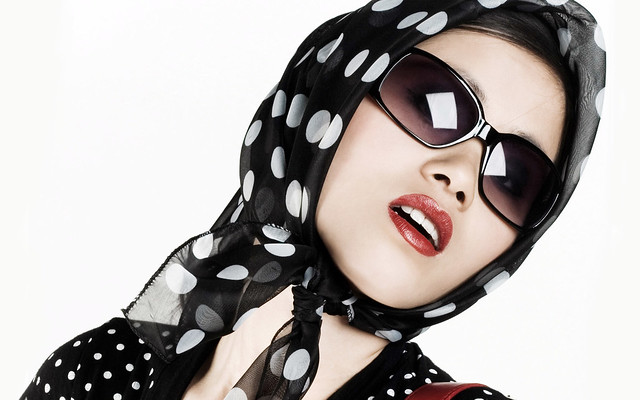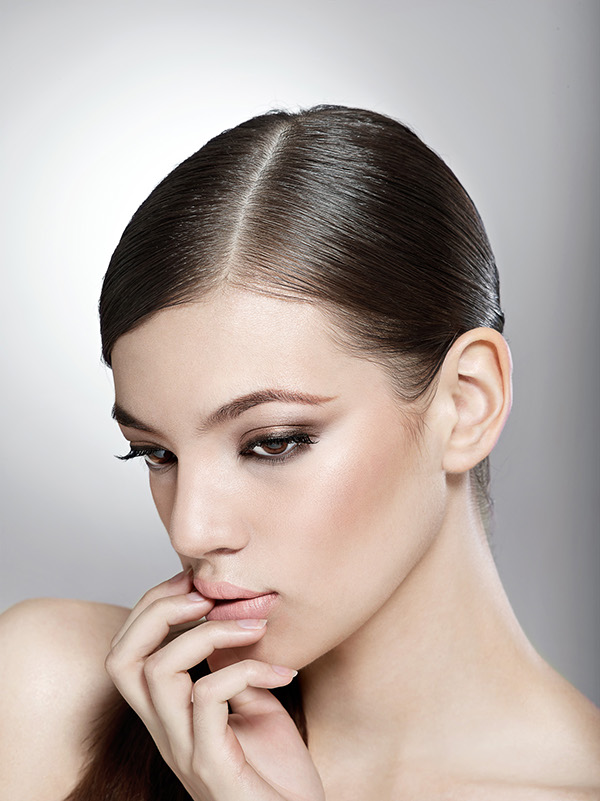About Best Skin Whitener
Source (google.com.pk)
Skin whitening, skin lightening, and skin bleaching refer to the practice of using chemical substances in an attempt to lighten skin tone or provide an even skin complexion by lessening the concentration of melanin. Several chemicals have been shown to be effective in skin whitening, while some have proven to be toxic or have questionable safety profiles, adding to the controversy surrounding their use and impacts on certain ethnic groups.
Contents [hide]
1 Uses
2 Combination treatments
2.1 Pre-melanin synthesis
2.1.1 Tretinoin
2.2 During melanin synthesis
2.2.1 Hydroquinone
2.2.2 Arbutin
2.2.3 Kojic acid
2.2.4 Azelaic acid
2.2.5 Vitamin C
2.2.6 Glutathione
2.2.7 Cinnamomum subavenium
2.3 Post-melanin synthesis
2.3.1 Alpha hydroxy acids
2.3.2 Niacinamide
2.4 Other/ungrouped
2.4.1 Depigmenting agents
2.4.2 Mercury
2.4.3 Other
3 Laser treatments
4 Cryosurgery
5 Controversy and negative health effects
6 See also
7 References
Uses
Specific zones of abnormally high pigmentation such as moles and birthmarks may be depigmented to match to the surrounding skin. Conversely, in cases of vitiligo, unaffected skin may be lightened to achieve a more uniform appearance.[1][medical citation needed] Long term use of skin whiteners can lead to pigmentation increasing to the joints of the fingers, toes, buttocks and ears. The skin of the face can become thinned and the area around the eyes can have increased pigmentation causing a 'bleach panda effect'.[2]
2012 sales of skin lightening creams in India alone totaled 258 tons[3] and the global market for skin lighteners is projected to reach US $19.8 billion by 2018 based on sales growth primarily in Asia, Africa and the Middle East.[4]
Combination treatments
Most skin-lightening treatments, which can reduce or block some amount of melanin production, are aimed at inhibiting tyrosinase. Many treatments use a combination of topical lotions or gels containing melanin-inhibiting ingredients along with a sunscreen, and a prescription retinoid. Depending on how the skin responds to these treatments, exfoliants — either in the form of topical cosmetic or chemical peels — and lasers may be used. New development using LED systems are also showing good results.
Pre-melanin synthesis
Tretinoin[edit]
Research has shown that the use of tretinoin (also known as all-trans retinoic acid) can only be somewhat effective in treating skin discolorations.[10][11][12][13] Users of tretinoin have to avoid sunlight, as the skin can tan. Using tretinoin always makes the skin more sensitive to UVA and UVB rays.
During melanin synthesis
Hydroquinone
Main article: Hydroquinone
In medical literature, hydroquinone is considered the primary topical ingredient for inhibiting melanin production.[14][15][16][17] Its components have potent antioxidant abilities.[18] Topical hydroquinone comes in 2% (available in cosmetics) to 4% (or more) concentrations (available from a physician or by prescription), alone or in combination with tretinoin 0.05% to 0.1%. Research has shown hydroquinone and tretinoin to prevent sun- or hormone-induced melasma.[10]
Hydroquinone is a strong inhibitor of melanin production, meaning that it prevents dark skin from making the substance responsible for skin color.[19] Hydroquinone does not bleach the skin but lightens it, and can only disrupt the synthesis and production of melanin hyperpigmentation. It has been banned in some countries (e.g. France) because of fears of a cancer risk.
Some concerns about hydroquinone's safety on skin have been expressed, but the research when it comes to topical application indicates negative reactions are minor or a result of using extremely high concentrations or from other skin-lightening agents such as glucocorticoids or mercury iodine. Any perceived risk is most likely applicable for African women.[20] Hydroquinone has been shown to cause leukemia in mice and other animals. The European Union banned it from cosmetics in 2001, but it shows up in bootleg creams in the developing world. It is sold in the United States as an over-the-counter drug, but with a concentration of hydroquinone not exceeding 2 percent.[21]
Because of hydroquinone's action on the skin, it can be irritant, particularly in higher concentrations of 4% or greater and predictably when combined with tretinoin. Some medications have been created that combine 4% hydroquinone with tretinoin and a form of cortisone. The cortisone is included as an anti-inflammatory. The negative side effect of repeated application of cortisone is countered by the positive effect of the tretinoin so that it does not cause thinning of skin and damage to collagen.[22] Safer alternatives are more expensive but are available.
Arbutin
Some of alternative lighteners are natural sources of hydroquinone. They include Mitracarpus scaber extract, Uva ursi (bearberry) extract, Morus bombycis (mulberry), Morus alba (white mulberry), and Broussonetia papyrifera (paper mulberry). All of these contain arbutin (technically known as hydroquinone-β-D-glucoside), which can inhibit melanin production. Pure forms of arbutin are considered more potent for affecting skin lightening.
Arbutin is derived from the leaves of bearberry, cranberry, mulberry or blueberry shrubs, and also is present in most types of pears. It can have melanin-inhibiting properties.[23] Arbutin and other plant extracts are considered safe alternatives to commonly used depigmenting agents to make the skin fairer. Medical studies have shown the efficiency of arbutin for skin lightening.[24][not in citation given] There are patents controlling its use for skin lightening. Arbutin actually exists in two isomers, alpha and beta. The alpha isomer offers higher stability over the beta isomer and is the preferred form for skin lightening indications.[citation needed]
Kojic acid
Kojic acid is a by-product in the fermentation process of malting rice for use in the manufacturing of sake, the Japanese rice wine. Some research shows kojic acid to be effective for inhibiting melanin production.[25] However, kojic acid is an unstable ingredient in cosmetic formulations. Upon exposure to air or sunlight it can turn brown and lose its efficacy. Many cosmetic companies use kojic dipalmitate as an alternative because it is more stable in formulations. However, there is no research showing kojic dipalmitate to be as effective as kojic acid, although it is a good antioxidant. Further, some controversial research has suggested that kojic acid may have carcinogenic properties in large doses.[26] Other further studies show that kojic acid is not carcinogenic, but can cause allergic contact dermatitis[27] and skin irritation.[28][29]
Azelaic acid
Azelaic acid is a component of grains, such as wheat, rye, and barley. It is applied topically in a cream formulation at a 10-20% concentration. Azelaic acid is used to treat acne, but there also is research showing it to be effective for skin discolorations.[30] Other research also indicates azelaic acid may be an option for inhibiting melanin production.[31]
Vitamin C
Vitamin C and its various forms (ascorbic acid, magnesium ascorbyl phosphate, etc.) are considered an effective antioxidant for the skin and help to lighten skin.[medical citation needed] One study[32] found it raises glutathione levels in the body. Another study found that brownish guinea pigs given vitamin C, vitamin E and L-cysteine, simultaneously, led to lighter skin.[33]
Glutathione
Glutathione is a tripeptide molecule found in mammalian bodies. It is an antioxidant that plays an important role in preventing oxidative damage to the skin.[34] In addition to its many recognized biological functions, glutathione has also been associated with skin lightening ability.[35] The role of glutathione as a skin whitening was discovered as a side effect of large doses of glutathione.[36] Glutathione utilizes different mechanisms to exert its action as skin whitening agent at various levels of melanogenesis. It inhibits melanin synthesis by means of stopping L-DOPA’s ability to interact with tyrosinase in the process of melanin production.[37] Research result from a study [37] shows that glutathione inhibits the actual production as well as agglutination of melanin by interrupting the function of L-DOPA. Another study found that glutathione inhibits melanin formation by direct inactivation of the enzyme tyrosinase by binding and chelating copper within the enzyme’s active site.[38] Glutathione’s antioxidant property allows it to inhibit melanin synthesis by quenching of free radicals and peroxides that contribute to tyrosinase activation and melanin formation.[39] Its antioxidant property also protects the skin from UV radiation and other environmental as well as internal stressors that generate free radicals that cause skin damage and hyper-pigmentation.[40] In most mammals, melanin formation consists of eumelanin (brown-black pigment) and pheomelanin ( yellow-red pigment) as either mixtures or co-polymers.[41] Increase in glutathione level may induce the pigment cell to produce pheomelanin instead of eumelanin pigments.[42] A research by Te-Sheng Chang found lowest levels of reduced glutathione to be associated with eumelanin type pigmentation, whereas the highest ones were associated with the pheomelanin.[43] As a result, it is reasonable to assume that depletion of glutathione would result in eumelanin formation. Prota [44] observed that decreased glutathione concentration lead to in the conversation of L-dopaqunione to L-dopachrome increasing the formation of brown-black pigment (eumelanin).
Glutathione is a best ingredients in use of cosmetics preparation. Glutathione for skin whitening is available in cream, soap, lotion, nasal spray and injectable form. Glutathione that is applied on the skin in the form of lotion is not efficiently absorbed by the skin cells as the thiol group undergoes rapid formation of disulfide.[45] When taken orally, glutathione is hydrolyzed by enzymes in the gastrointestinal tract resulting in reduced bioavailability.[46] The level of glutathione increased in smalls amounts temporarily when large oral doses were administered.[47] As a result, the effectiveness of externally administered glutathione is slowed down by its inability to cross cell membranes efficiently and its rapid degradation by enzymes in the gastrointestinal tract.[45] On the contrary, intravenous glutathione delivers very high doses directly into the systemic circulation and is the preferred mode of administering glutathione. However, this method of administrating the antioxidant might flood the cells with glutathione that may cause reductive stress.[48] This might expose people to potential health risks associated with long-term use of high dose of glutathione.[49]
Glutathione can be combined with many other agents like vitamin C to increase its absorption, N-acetyl cysteine to boost its level, and other antioxidants like vitamin E. Some oral intake of glutathione could have dangerous effect when combined with other skin whitening agents such as hydroquinone which is a carcinogenic element and monobenzone which causes irreversible depigmentation.
Best Skin Whitener Skin Whitening Pills Cream Tips in Urdu Soap Tips Forever Products Before and After Injection Photos Pics Images
Best Skin Whitener Skin Whitening Pills Cream Tips in Urdu Soap Tips Forever Products Before and After Injection Photos Pics Images
Best Skin Whitener Skin Whitening Pills Cream Tips in Urdu Soap Tips Forever Products Before and After Injection Photos Pics Images
Best Skin Whitener Skin Whitening Pills Cream Tips in Urdu Soap Tips Forever Products Before and After Injection Photos Pics Images

Best Skin Whitener Skin Whitening Pills Cream Tips in Urdu Soap Tips Forever Products Before and After Injection Photos Pics Images
Best Skin Whitener Skin Whitening Pills Cream Tips in Urdu Soap Tips Forever Products Before and After Injection Photos Pics Images

Best Skin Whitener Skin Whitening Pills Cream Tips in Urdu Soap Tips Forever Products Before and After Injection Photos Pics Images
Best Skin Whitener Skin Whitening Pills Cream Tips in Urdu Soap Tips Forever Products Before and After Injection Photos Pics Images
Best Skin Whitener Skin Whitening Pills Cream Tips in Urdu Soap Tips Forever Products Before and After Injection Photos Pics Images
Best Skin Whitener Skin Whitening Pills Cream Tips in Urdu Soap Tips Forever Products Before and After Injection Photos Pics Images

Best Skin Whitener Skin Whitening Pills Cream Tips in Urdu Soap Tips Forever Products Before and After Injection Photos Pics Images
Best Skin Whitener Skin Whitening Pills Cream Tips in Urdu Soap Tips Forever Products Before and After Injection Photos Pics Images
Best Skin Whitener Skin Whitening Pills Cream Tips in Urdu Soap Tips Forever Products Before and After Injection Photos Pics Images
Best Skin Whitener Skin Whitening Pills Cream Tips in Urdu Soap Tips Forever Products Before and After Injection Photos Pics Images
Best Skin Whitener Skin Whitening Pills Cream Tips in Urdu Soap Tips Forever Products Before and After Injection Photos Pics Images
Best Skin Whitener Skin Whitening Pills Cream Tips in Urdu Soap Tips Forever Products Before and After Injection Photos Pics Images

Best Skin Whitener Skin Whitening Pills Cream Tips in Urdu Soap Tips Forever Products Before and After Injection Photos Pics Images

Best Skin Whitener Skin Whitening Pills Cream Tips in Urdu Soap Tips Forever Products Before and After Injection Photos Pics Images
Best Skin Whitener Skin Whitening Pills Cream Tips in Urdu Soap Tips Forever Products Before and After Injection Photos Pics Images
Best Skin Whitener Skin Whitening Pills Cream Tips in Urdu Soap Tips Forever Products Before and After Injection Photos Pics Images
Best Skin Whitener Skin Whitening Pills Cream Tips in Urdu Soap Tips Forever Products Before and After Injection Photos Pics Images
Best Skin Whitener Skin Whitening Pills Cream Tips in Urdu Soap Tips Forever Products Before and After Injection Photos Pics Images
.jpg)
No comments:
Post a Comment